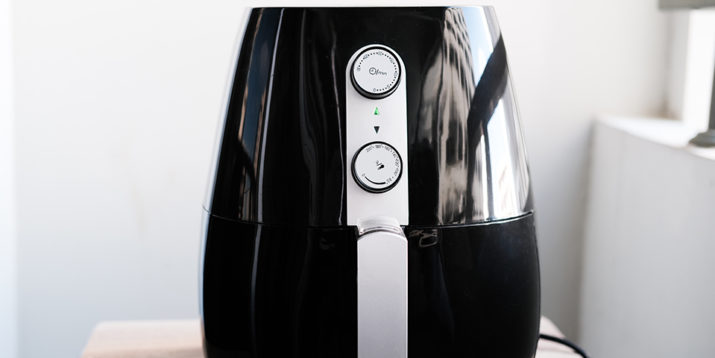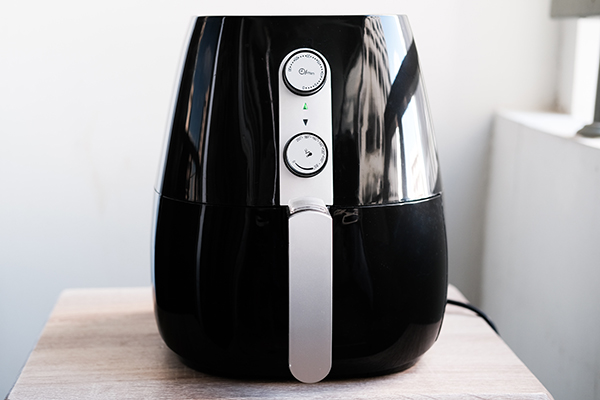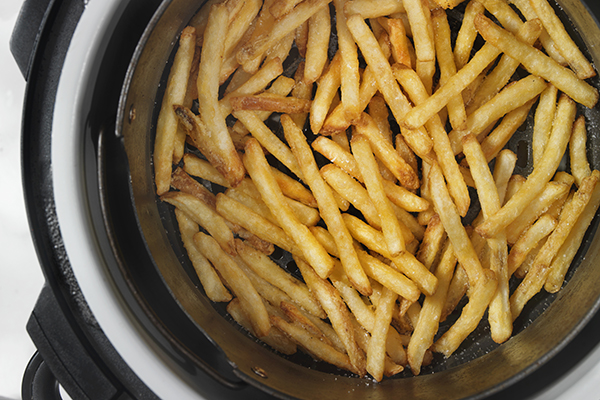What Is an Air Fryer (and Do You Really Need One)?

Every few years, a new kitchen appliance hits the market and becomes the “must-have” gadget.
There was the Instant Pot. Then the spiralizer for making zucchini noodles.
And now? There’s the air fryer.
But what is an air fryer?
It’s a gadget that will be right at home in any cook’s kitchen. You can create crispy, crunchy foods that taste like they’re fried — but with little to no oil.
Even better: An air fryer can help you save time, so your favorite meals are ready faster, and with fewer calories and less added fat.
“I love how quick and efficient they can be,” says Dana Angelo White, M.S., R.D., ATC, a registered dietitian, certified athletic trainer, and author of two cookbooks devoted to air fryer recipes.
Read on to learn more about this trendy piece of kitchen equipment — and whether the air fryer deserves a spot on your countertop.

What Is an Air Fryer?
An air fryer isn’t like a deep fryer, despite the similar names. Air fryers cook using air; deep fryers use fat.
“It’s basically a mini convection oven, but it is much faster than a conventional oven and allows for food to cook quickly and evenly,” explains Angelo White.
The name comes from the air fryer’s ability to create a crunchy, crispy exterior, similar to deep frying.
Air fryers take up about as much space as a blender or a food processor. These compact convection ovens have a base with a heating element and a fan and (usually) a removable basket to hold your food.
How Does an Air Fryer Work?
The air fryer uses a combination of heat and air, says Tina Marinaccio, MS, RD, CPT, a culinary dietitian who teaches group and private cooking classes.
Like a typical oven, the air fryer heats up, but then the fan “blows the air around, which means faster cooking time and crispy skin on meats,” she adds.
With little to no oil at all, it creates crispy, crunchy, and golden-brown foods.
Think: Fries without the grease!
It’s like getting into a cold car and using the “recirculate” air function — your car feels warmer faster because you’re blowing all that warm air around.
The result is food that tastes like it’s been cooked with loads of oil and grease, due to a chemical reaction called the “Maillard reaction,” named after French chemist Louis-Camille Maillard.
When cooking foods at high temperatures, the proteins and sugars react to create that delicious browned exterior.
What Does an Air Fryer Do?
An air fryer won’t replace your oven entirely, cautions Angelo White, “but it certainly can do some things better than a traditional oven.”
Thanks to the combo of heat and air, an air fryer is great at:
- Adding flavor with little to no fat
- Cooking food faster
- Faux frying even without added fat
- Creating crisp crusts and skin on meats
- Preventing frozen foods from getting soggy as they cook

The Best Air Fryer Foods
“Not surprisingly,” says Angelo White, an air fryer can make “great French fries and even better potato chips and veggie chips.”
Here’s a list of some of the best air fryer foods, along with some that might be surprising:
- apple chips
- bagel pizzas
- crispy chickpeas
- croutons (oil-free)
- egg rolls
- homemade chicken tenders
- oil-free tortilla chips
- potato skins
- roasted garlic
- roasted nuts and seeds
- roasted vegetables
- rotisserie chickens (small ones)
- salmon or other fish fillets
- taquitos
- veggie chips: beets, carrots, parsnips, potatoes, zucchini, etc.
Angelo White says you can also bake in an air fryer.
“Shortcakes, scones, and doughnuts are some of the best things to make in the air fryer,” she says. And don’t be afraid to get creative!
“Some of my favorite things to make in the air fryer are unexpected,” says Angelo White. That includes salmon fillets, prosciutto-wrapped asparagus, arancini (rice balls) and stuffed peppers.
But there are foods that you don’t want to cook in an air fryer.
Anything delicate or lightweight that could get blown up into the fan, as well as anything that would drip grease, like fatty cuts of beef or bacon.
What Is the Best Air Fryer?
Air fryers come in different sizes, so you’ll want to choose a model that’s large enough for your household.
If you’re cooking for six with an air fryer designed for two, you won’t save time, as you’ll have to prep batch after batch of food.
Also consider how you’ll be using it — cooking individual meals or batch cooking for meal prepping.
Prices start around $45, with the best-rated models averaging around $70 to $90, depending on size.
“One of the biggest limitations can be the size of the inner chamber and the basket that allows air to circulate around the food,” says Angelo White.
But, if you’re short on space or cooking for a crowd, you can swap in your oven.
“Many ovens and toaster ovens already have a convection setting, so can be used in place of an air fryer,” says Marinaccio.
Another trend in kitchen appliances is countertop convection ovens with multiple settings. These can replace your air fryer, dehydrator, toaster oven, and more.
However, these appliances start around $200 and go up to $400 and more.
Instant Pot vs. Air Fryer? What’s the Difference?
Instant Pots are electric pressure cookers that serve many functions, but they can’t replace an air fryer. Instant Pots lock in moisture; air fryers specialize in removing it.
While both can save you time in the kitchen and make healthy cooking easier, they don’t do the same things.
Instant Pots are great for cooking stews, soups, dried beans, whole grains, and large cuts of meat. Awesome as they are, air fryers can’t do any of those things.
The Bottom Line
Air fryers are a great kitchen tool to have on hand if you love crunchy-crisp foods but don’t like all the fat and oil that tend to come with deep frying.
